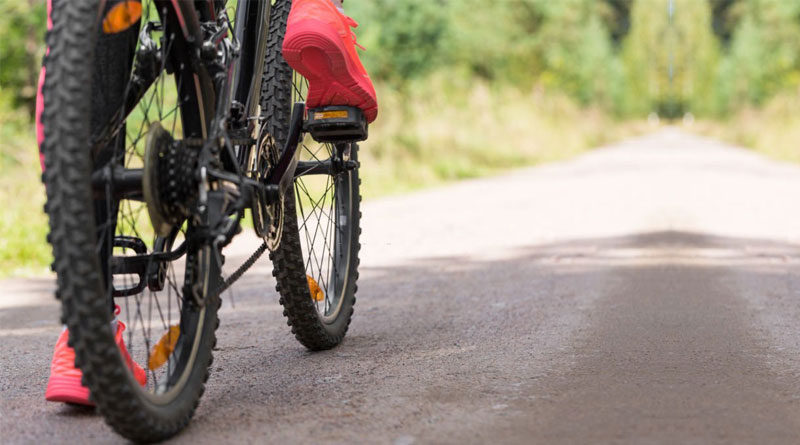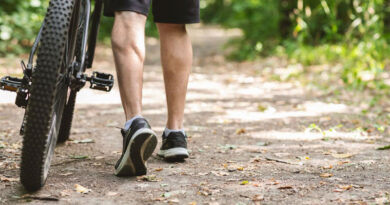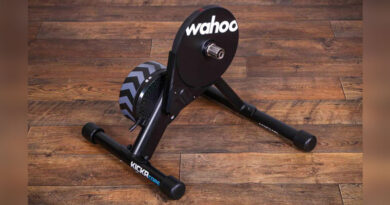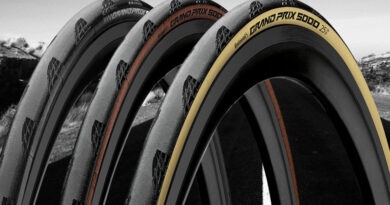Best Budget MTB Shoes for Flat Pedals
Flat pedal shoes are an excellent choice for those who are just starting. They are a great way to learn proper techniques and develop master-level skills. While SPDs are more efficient, they don’t allow you to learn proper control. But flat pedal shoes are not only used by students or beginners. Many MTB riders prefer flat pedal shoes because of the freedom they provide. Putting the foot down while riding in rough terrain is common and pro riders need to have such freedom. Flat pedal MTB shoes can cost somewhere from less than $100 up to $500.
So here is the list of best budget mountain bike shoes for flat pedals to tackle any trail without hurting your wallet.
1. Ride Concepts Livewire
Weight: 1 lb. 15 oz.
Upper: Synthetic suede
Outsole: Rubber Kinetics DST 6.0
Midsole: EVA
The price-to-performance ratio offered by Livewire is hard to beat, making it an extraordinary option for its price. The shoe is an almost perfect balance between grip, comfort, power transfer, and durability. Even though nothing is perfect, for a reasonable price, not much would be left to crave with the Livewire.
The grip is where the Livewire shines. Featuring the DST 6.0 High Grip proprietary rubber developed by Ride Concepts partnered with Rubber Kinetics, the value of the shoe skyrockets. The rubber makes the sole reasonably stiff. It is soft enough to allow the pedal pins to dig in locking the shoes to the pedals. At the same time, it is stiff enough to provide adequate support and power transfer during rides.
The D30 inserts and EVA midsoles combined provide good dampening to absorb vibrations reducing foot fatigue. But this combination, somehow, doesn’t compromise the pedal feedback. The shoes can become slippery in muddy and wet conditions due to non-aggressive treads. But it shouldn’t be a deal breaker as they still remain manageable.
The upper features a suede-like synthetic material which is a bit thick and feels high quality. Padding on the inside gives a plush and comfortable feel. You get a fair amount of toe and heel protection as well. But this plush and protective upper only manages average breathability even with holes and mesh. The shoe is welded – not stitched – in high-wear areas along with reinforced shoelace eyelets giving a durable feel. But all these features combined and the Livewire becomes a heavy shoe, not for longer rides or steep climbs.
What I like: Excellent price-to-performance ratio, DST 6.0 rubber provides exceptional grip and power transfer, a comfortable and durable upper construction
What I don’t: Average breathability not for hot weather, a bit heavy
See the Ride Concepts Livewire See the Women’s Livewire
2. Five Ten Freerider Pro
Weight: 1 lb. 8 oz.
Upper: Synthetic
Outsole: Stealth S1 rubber
Midsole: Compression-molded EVA
The Five Ten Freerider Pro is considered a benchmark and has dominated the flat pedal shoe space for years. Its features make it versatile for a variety of MTB riding conditions. Ride Concepts specifically introduced the Livewire to challenge the dominance of the Freerider Pro.
The Freerider Pro offers tremendous grip with its Stealth S1 rubber, courtesy of Five Ten’s experience developing climbing shoes. Compared to the DTS 6.0 rubber in the Livewire, the Stealth S1 is softer. You can actually feel the pins digging into the sole. If your pedals have sharp pins, you would get an almost SPD-like performance from the Freerider Pro. You would even have difficulty disengaging the pedal.
The power transfer is excellent due to stiffer soles and is noticeable during long rides and climbs, something the Livewire can barely match. The shoe absorbs most of the vibrations and impacts. The sole is coupled with an EVA midsole to ensure you only get necessary pedal feedback. The resulting ride causes less fatigue.
Keep in mind that the soft Stealth S1 rubber wears out quickly but should still last a few seasons. The synthetic upper of the Freerider Pro, on the other hand, is far more durable than the outsole. It repels water and mud. On the inside, you get PORON foam padding for extra protection during descents adding to the versatility of the shoe. Even with all this performance, Five Ten has managed to make the Freerider Pro a light shoe. But you do have to pay the extra bucks for the exceptional performance.
What I like: Exceptional grip, near SPD-like performance, versatile enough for most MTB conditions, PORON padding provides more protection
What I don’t: Softer outsole wears out faster than the upper, a bit pricey for a budget option
See the Five Ten Freerider Pro See the Women’s Freerider Pro
3. Ride Concepts Powerline
Weight: 1 lb. 14 oz.
Upper: Synthetic microfiber
Outsole: Rubber
Midsole: EVA
The first impression of the Ride Concepts Powerline is that it’s aptly named due to its high-quality robust looks and protective feel. But then, perhaps, that is the whole point as the Powerline is a more gravity-oriented shoe. It has to be more protective and better quality to sustain. And while it does try to be other things, it’s best used as a gravity shoe.
The grip is somewhere in the middle. Unlike the DST 6.0 rubber in its sibling, the Livewire, the Powerline uses a less sticky DST 4.0 Max rubber. The resulting grip is adequately keeping gravity riding in mind which…makes sense since you often urgently need to put your foot down while descending. But you still have to put in a conscious effort to make micro-adjustments.
The sole stiffness is the same case as the grip. Adequate stiffness without unwanted flex. You can walk with ease in these shoes. The sole is nicely balanced and features good shock absorption to prevent bounce and foot fatigue because of the D30 inserts and EVA midsoles.
The built quality is superb in the Powerline which justifies a higher price tag on this shoe. There is attention to detail. The whole shoe has been designed as if the designers knew what they were doing. Everything serves a purpose. Protection, all-day comfort, and outlasting durability, all kept in mind and accounted for. The consequence of such robustness and practicality is limited breathability and heavier weight as expected. But, is limited breathability and heavier weight really a concern for someone using gravity to accelerate?
What I like: Impressive built quality, more padding for added protection and comfort, outlasting durability
What I don’t: Lacks versatility, a similar price to the Freerider Pro further highlights the lack of versatility
See the Ride Concepts Powerline
4. Giro Jacket II
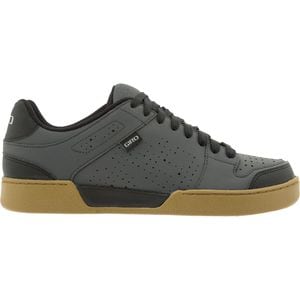
Weight: 1 lb. 13.4 oz.
Upper: Synthetic microfiber
Outsole: Vibram MegaGrip
Midsole: EVA
Giro markets the Jacket II as a daily driver shoe and you would most probably agree when you look at it. It’s a budget option that doesn’t pretend to be expensive. There is nothing fancy here, no bells and whistles to talk about. It is a basic shoe that gets the job done. Sure you aren’t getting the performance of some other expensive shoes on this list, but then, you aren’t paying their heavy price either.
The Jacket II looks like a classic Vans skate shoe that is styled casually as is its use. You can view it as more suited for BMX-style riding doing jumps and tricks in a park. The performance also implies the same. The grip is decent, providing a decent connection with the pedals. You can disengage the pedal with ease as you ride along which is suited for park rides. The reduced grip is not noticeable during normal rides. But you do feel like hanging on the edge during hard pedaling.
The shoe lacks rigidity and you can bend it by hand so the power transfer is not as efficient as you would like. But they are easy to walk in. The microfiber upper, on the other hand, feels very good against the skin. There is a low amount of EVA foam padding inside which doesn’t feel stuffed. The skate-style design of the shoe makes it roomy and is great for people with high-volume feet. The resulting shoe is lightweight and breaths well so you shouldn’t have any problems on longer rides.
What I like: Attractive price, roomy on the inside, breathability is excellent easy to walk
What I don’t: Lacks rigidity for efficient power transfer, the grip can be improved
5. Shimano GR5
Weight: 1 lb. 12.2 oz.
Upper: Synthetic leather
Outsole: Rubber
Midsole: Not specified
Shimano is a well-known brand in the cycling world. It offers the GR5 as an entry-level gravity-oriented MTB shoe. For gravity-oriented shoes, the price of the GR5 is quite cheap. But Shimano is not a cheap brand. So what should you expect from the GR5?
There are a few reasons why the GR5 is on the list of the best budget MTB flat pedal shoes. Firstly, it’s low price. Secondly, it’s an excellent option for urban and gravel riding. The GR5 is sufficient for all-day non-competitive riding. It is a shoe best for beginners and for practicing as it leans toward gravity riding.
The GR5 is an intermediate performer. It won’t win you a medal by any means but it won’t disappoint you either. It’s for having fun. The grip and protection are decent and are not suitable for competitive use. The shock absorption is very little and you can feel the excessive feedback. Perhaps, Shimano wants riders to embrace the raw feeling of riding, who knows?
The flex in the sole allows comfortable walks making it clear that this shoe is aimed at beginners. These are the least stiff shoes offered by Shimano. The synthetic leather upper feels quality. It is thin and allows tons of breathability. With minimalist features, the weight of the shoe is light; ideal for longer fun rides.
What I like: Beginner-friendly shoe, gravity-oriented shoe on a budget, the upper is breathable despite being leather
What I don’t: Insufficient protection for a gravity-oriented shoe, excessive pedal feedback
6. Five Ten Trailcross LT
Weight: 1 lb. 7 oz.
Upper: Synthetic
Outsole: Stealth rubber
Midsole: EVA
With the Trailcross LT, Five Ten has targeted a very narrow niche. The shoe is aimed at those who are into hike-a-bike adventures. Five Ten has tried to make the Trailcross LT a bridge between hiking and biking shoes. While the price may seem high-end, it is indeed a budget shoe taking into account the versatility it offers.
When you ride, the trade-offs become clear between the hiking and riding aspects of the shoe. The style is reminiscent of a hiking shoe. It is a narrow shoe with flex in the sole for a better walking experience which reduces contact area and compromises power transfer.
The riding aspect of the Trailcross LT is similar to the Freerider Pro. Offers excellent grip with the Stealth Phantom rubber. The sole is stiff enough and combined with EVA midsoles to prevent excessive pedal feedback and fatigue. Reinforced toe box and heel pocket for better protection. But the dotted, as well as longitudinal tread pattern, optimizes both, walking and riding.
The built quality is just as impressive as expected from Five Ten. The mesh upper feels pleasant against the skin and is quick drying. This shoe is specialized for breathability and ventilation thanks to its upper and perforated footbed. Despite the excellent built quality, the mesh upper is prone to damage and the Stealth rubber wears out faster raising a question mark on the durability. The upper also fails to provide adequate support for riding.
The Trailcross LT is a somewhat light shoe. But the breathability and walkability make it feel lighter than it is. It is optimized for two activities and fares well in both. But for a dedicated riding shoe, you should look elsewhere.
What I like: Versatility that doesn’t bankrupt you, unmatched breathability for hiking, feels lighter than it is when wearing
What I don’t: Mesh upper and Stealth rubber decrease durability, mesh upper provides less support for riding
See the Five Ten Trailcross LT See the Women’s Trailcross LT
7. O’Neal Pinned

Weight: Not specified
Upper: Lightweight PU
Outsole: Honey Rubber
Midsole: Not specified
The O’Neal Pinned is the cheapest flat pedal shoe on this list. While you may expect a cheap shoe to be a miserable performer, the Pinned is something different. It is an entry-level MTB flat pedal shoe with a nice look and satisfactory performance for what you pay.
The shoe has, surprisingly, a lot to offer for the price. Some of these features you can only find on pricier options only. The Pinned uses nylon instead of rubber for the sole material. The grip is decent, not mind-blowing, but decent. The sole is stiff – some may even find it too stiff – and the power transfer is impressive. The Pinned works well when climbing or during long rides. Of course, a stiff sole also means that the shoe is uncomfortable to walk in, and that, it is. You may also have a hard time finding traction during wet or hard pedaling conditions.
The leather upper is designed for trail riders and makes the Pinned feel more expensive than it is. It is water and mud resistant. There is the padding on the inside at all the right places for comfort along with ankle and toe box protection. O’Neal also claims that the upper was designed with more emphasis on durability. But one common problem with resistant uppers is that they don’t breathe well.
The nylon and the leather upper construction make the Pinned a heavy shoe that is not suitable for longer rides. However, for 10 more bucks, you can buy the Pinned Pro. It is a better version of the Pinned with better ankle protection, more internal support, and better safety features.
What I like: One of the cheapest MTB flat pedal shoes, water and mud-resistant leather upper, stiff soles for better power transfer
What I don’t: Soles can be too stiff for those wanting flexibility in the feet, and the leather upper runs hot due to a lack of breathability
8. Pearl iZUMi X-Alp Flow
Weight: 1 lb. 8 oz.
Upper: Rubber/plastic
Outsole: Rubber/PU/EVA
Midsole: EVA
There is always that one affordable item that turns out to be better than your expectations. The Pearl iZUMi X-Alp Flow is just that; a hidden gem on this list. I would even go as far as to say that it is the second-best value shoe on this list after the Livewire. This cleverly constructed shoe provides the comfort of a normal shoe without much compromise on riding performance.
The shoe offers versatility because of two different rubber compounds in the outsole. The middle part of the sole that engages the paddle is made of softer, stickier rubber with a narrow tread pattern. The rubber under the toes and ankles is harder with a broad tread pattern for off-bike grip during walking or bike-a-hike. Such rubber distribution also increases the durability of the shoe.
Both, the upper and the sole have flex. The upper is made of thin suede-like synthetic material with removable insoles and EVA midsoles. The flexible upper conforms to the shape of the foot nicely and the flex in the sole allows walking naturally. The overall flex in the structure makes this already light shoe, even lighter. The price of this flexibility is lower power transfer as you may expect.
Although the lighter construction of the shoe is naturally breathable, it’s not a shoe for hot days. The upper material is continuous without any mesh inserts. But you do get moderate breathability sufficient for most conditions with the vent holes. Details to little things make the X-Alp Flow more durable. It is a comfortable and reliable shoe for daily use.
What I like: Clever construction makes the shoe feel lighter than it is, durability and usability have been specifically considered, and the comfort of a normal shoe
What I don’t: Breathability could have been improved, sole flex results in less power transfer
See the Pearl iZUMi X-Alp Flow
Budget MTB Shoes for Flat Pedals: Summary
| SHOES | WEIGHT | UPPER | OUTSOLE | MIDSOLE |
|---|---|---|---|---|
| Ride Concepts Livewire | 1 lb. 15 oz. | Synthetic suede | Rubber Kinetics DST 6.0 | EVA |
| Five Ten Freerider Pro | 1 lb. 8 oz. | Synthetic | Stealth S1 rubber | EVA |
| Ride Concepts Powerline | 1 lb. 14 oz. | Synthetic microfiber | Rubber | EVA |
| Giro Jacket II | 1 lb. 13.4 oz. | Synthetic microfiber | Vibram MegaGrip | EVA |
| Shimano GR5 | 1 lb. 12.2 oz. | Synthetic leather | Rubber | Not specified |
| Five Ten Trailcross LT | 1 lb. 7 oz. | Synthetic | Stealth rubber | EVA |
| O’Neal Pinned | Not specified | Lightweight PU | Honey Rubber | Not specified |
| Pearl iZUMi X-Alp Flow | 1 lb. 8 oz. | Rubber/plastic | Rubber/PU/EVA | EVA |
How to Choose MTB Shoes for Flat Pedals?
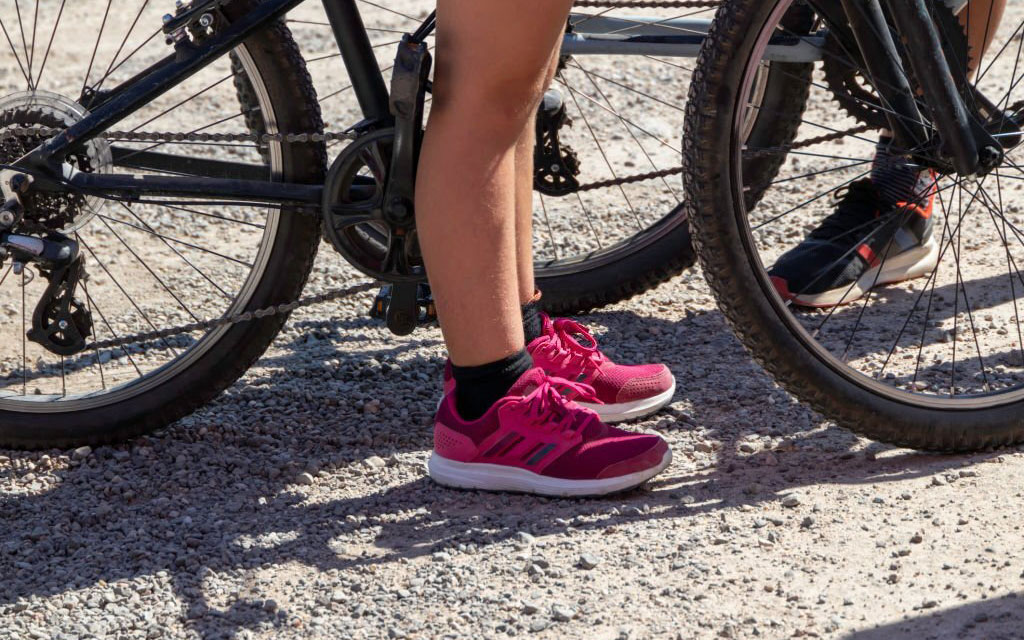
There are a lot of options to choose from in the MTB flat pedal market which can be confusing. Ending up with a shoe that isn’t right for you can cause frustration and even waste your money in some cases. Here is a small guide to help you choose the right MTB flat pedal shoe for yourself.
Do you need dedicated flat pedal shoes?
The advantage of having flat pedals is that you can ride them with any kind of shoes. But, then, what’s the point of spending money on dedicated flat pedal shoes? The features of these shoes are specifically added to these shoes to enhance pedaling performance on rough terrains.
Flat pedal shoes are made of compounds that provide a better grip. They have a special tread pattern, and they are more rigid than regular shoes for better power transfer. Many flat pedal MTB shoes also provide more protection with hardened toe boxes and heel cups. Dedicated shoes allow riders to ride faster and longer with less fatigue. Once you get dedicated shoes, you would appreciate the gain in performance and it would be hard for you to go back to regular shoes.
MTB Riding Style
The features you would want in your shoes depend on your riding style. If you are a casual rider, then entry-level shoes should be enough for you. But if you ride long distances then you would need more pedal grip and durability. Uphill riders require more stiffness in their shoes for better energy transfer when struggling with pedaling.
Riders who like to change terrains frequently can look into all-mountain shoes. All-mountain shoes are versatile that can get you through most rough terrains. But versatility comes at the price of performance. All-mountain shoes are a Jack of all trades so expect decent performance from them. But at least you won’t be held back.
Downhill shoes or gravity shoes are the heavyweights of the flat pedal bunch. They are made of thicker materials and provide better protection with hardened toe boxes and heel cups. Shock absorption capabilities are excellent in these shoes which makes sense as the rider can face quite the impact when putting the foot down at high speeds going downhill.
If you are a park rider who likes to perform flips and tricks, then you should consider BMX-style flat pedal shoes. Such shoes are made with soft rubber, often lightweight, and provide more mobility to the feet. The BMX-style shoes look like normal shoes. They are great for those who don’t want to scream “cyclist” to the world. Such shoes are also a good option for casual short-distance riders.
Grip
Flat pedal shoes use rubber to create grip so the rubber compound of these shoes influences how much grip you get. Soft rubber compounds provide more grip because the pins of the pedals easily penetrate into the rubber. But soft rubber also wears out faster so it is a compromise between performance and durability.
Some time back, the soles of most flat pedal shoes were provided by either Five Ten or Vibram. Five Ten rubber was – and still is among – the best in class. But now, the competition has caught up. Along with other bike brands, even tire manufacturers like Michelin and Goodyear are offering proprietary rubber compounds for flat pedal shoes.
Giro has recently developed its Tack Rubber compound. Similarly, Specialized has developed its own SlipNot ST rubber compound. Rider Concepts has partnered with a company called Rubber Kinetics to develop its DST rubber compound which poses the most threat to Five Ten’s dominance. All of these rubber compounds perform great but the choice depends on how much grip you need for your riding style.
Power Transfer
Cycling shoes should allow the most efficient power transfer from the legs to the pedals. After all, that is what cycling shoes are made for. How well the shoe transfers power to the pedals depends on the stiffness of the shoe. A stiffer shoe allows better power transfer.
But more stiffness is not always good. A shoe too stiff can bounce on the pedal and is uncomfortable to walk in. A flexible shoe absorbs energy but provides more feedback and the rider feels connected. A shoe with balanced stiffness allows better power transfer, pedal feedback, and doesn’t cause discomfort during short walks.
Fit
The fit of the shoe is an important factor as it most significantly determines the comfort of the shoe. But the fit of flat pedal shoes has another function. It also influences the performance of the rider. Overall, the fit of the shoe depends on many personal factors like the shape and girth of the foot. But make sure you get the right fit.
A flat pedal shoe should fit like a glove. It should feel snug on the foot while minimizing any foot movement within. If the shoe is too big, it would absorb energy during pedaling making the ride inefficient. A larger shoe also causes hot spots and blisters because the dangling shoe bites into the different parts of the foot. On the other hand, a smaller-sized shoe would put pressure on the foot and hamper blood flow. In short, the wrong fit would cause you great discomfort and even pain that will last a long time.
Many riders choose cycling shoes based on how good the shoes feel while walking. The fit may feel fine while walking. But walking doesn’t, by any means, simulate the stress on the foot experienced during pedaling. It is only during pedaling that you can tell how the shoe really fits and what the correct size should be. Try the shoes out on a bike with your socks on.
Weight
The weight of the shoe matters most if you are a competitive rider. Every ounce can add tenths to your runs. Professional athletes use shoes made of carbon fiber; stiff, yet, extremely lightweight. But they will cost most people their lungs and a kidney to get those shoes. Besides, most people don’t even need that kind of performance.
But the weight of the shoe also matters during long rides. If you ride long distances and your shoe weighs unnecessarily heavy, you will get tired faster. But lighter shoes have thinner materials that wear out faster. Again, it’s up to you to strike that balance.
Durability
No matter how many advanced features your cycling shoes have, it doesn’t matter if they don’t last long enough. Cycling shoes aren’t exactly cheap shoes, especially, when compared to regular shoes. So if your favorite pair breaks down earlier than you expected, you feel as if you have been scammed.
High-performance cycling shoes are typically durable as well. But not all marketing is genuine and you would find a lot of hype out there. Shoes with thicker rubber experience less wear and last longer. However, they can be heavy and may not allow a lot of feedback to the rider. Softer rubber is the exact opposite.
Simpler tightening systems – laces, and Velcro – increase the durability of the shoes even though they have their downsides. Complex systems like BOA are prone to failure in a short period and are difficult and expensive to repair. However, complex systems provide better performance. In the end, it’s up to the rider to decide between durability, comfort, and performance.
Breathability
The breathability of your cycling shoe doesn’t matter during short distances. But on longer distances, the body temperature will rise and you will start sweating… as you should. Lack of ventilation will cause you great discomfort in your shoes in such a case.
How much ventilation you need depends on the time of the day you ride and the region you are in. Early morning or night rides and riding in cold regions don’t require much ventilation. Thicker synthetic and leather uppers are less breathable. Thin materials are more breathable but provide less protection from elements. But more breathable material also dries faster.

